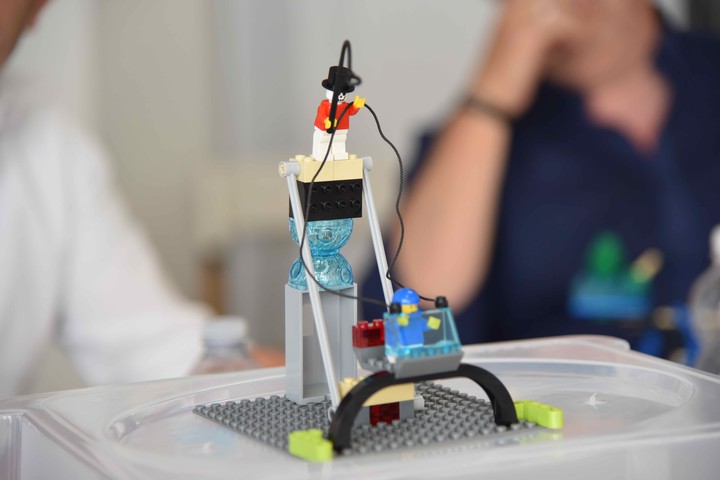
While a company might think it already has the best talent available, much innovation occurs outside the usual venues. In campuses, garages, and small offices worldwide, independent innovators find ways to apply modern technologies to age-old problems. Acting without pressure from higher-ups, they find themselves having complete control over the creative process.
Open innovation challenges seek to attract these individuals and groups. Through innovation challenges, companies give both internal and external innovators a nurturing environment where they can hatch and nurture ideas, even unorthodox ones coming from unexpected sources.
This article will discuss the concept of open innovation challenges and give a few examples of companies that use innovation challenges to develop new products and services.
Open Innovation Challenges Defined
Forbes defines open innovation as “the use of purposive inflows and outflows of knowledge to accelerate internal innovation, and expand the markets for external use of innovation, respectively.” The “challenge” part of the concept implies that companies offer rewards and incentives to people or groups that solve problems.
In other words, open innovation challenges are competitions where people brainstorm solutions either individually or in groups. The prizes take the form of investment in the startup or employment in the parent company. In some cases, the winners are also given access to resources they need to develop their product to maturity, such as assistance with preparing business cases, office facilities, and mentoring.
Compared to traditional R&D efforts, open innovation challenges are quick, cheap, and scalable, making them ideal for businesses that seek to crowdsource low-cost, innovative solutions within a short time. You may think of them as similar to a high school science fair, but for start-ups. Instead of assigning a problem to a select group of researchers, you get solutions from a diverse range of talented teams and individuals.
A Few Times Companies Got it Right
Open innovation challenges take different forms. Some companies open these challenges exclusively to external contenders, while others encourage their employees to explore new ways of dealing with internal requirements. Here are a few examples of companies that use open innovation challenges to discover fresh approaches to business problems and customer needs.
Samsung
While other consumer technology companies sponsor a few open innovation challenges to develop new hardware or software products, Samsung takes a different approach. At the company, open innovation is a perpetually ongoing process.
Samsung encourages its massive R&D department, with its equally large budget, to seek opportunities for open innovation. The company champions collaborations with external partners and has successfully spun off dozens of startups that originated from those collaborations.
Samsung categorizes its open innovation strategy into four parts: partnerships, accelerators, acquisitions, and ventures.
As a partner, Samsung collaborates with other tech companies to find new opportunities within its existing product line. As an accelerator, Samsung looks for promising startups and provides them with an environment that will allow them to succeed. Samsung also acquires startups whose innovations align with the company’s focus areas.
The IoT company SmartThings is a product of Samsung’s open innovation culture. Samsung acquired SmartThings in 2014 after the latter attracted attention from venture capitalists and raised as much as $12.5 in one funding round. Samsung’s top executives saw SmartThings as an excellent way to entire the lucrative IoT market, something it had been trying to penetrate for the longest time.
Aside from guiding and acquiring promising startups, Samsung also encourages open innovation through the Samsung Tomorrow Solutions competition. Since 2013, the company has been sponsoring the competition to seek creative solutions for society, including education, health, environment, and community development.
Source: Samsung
One of the competition’s winners, Project BOM, developed a portable diagnostic device for eye conditions using a retinal camera and a mobile medical information platform. This solution is already being used to reduce preventable blindness in developing countries such as Vietnam, where there are only 250 optometrists serving a population of close to 100 million.
Lego
It’s rare to hear of a parent who has never heard of Lego. For almost a century, the Danish toymaker has created some of the most iconic toy products for kids, including its Duplo line of toddler’s blocks and the Lego Technic range for advanced builders. However, the company continues to look for fresh ideas for new products, and it looks to its community of users and followers for inspiration.
Source: 100% Open
By engaging users through its Lego Ideas website, the company gives its loyal fans a platform for sharing their ideas for new Lego designs. In return, the company has enjoyed an inflow of new product ideas, many of which have actually made it to production - and ultimately, to the hands of adoring fans worldwide.
Good examples of crowdsourced Lego products you can find on the company’s ecommerce website include the popular Big Bang Theory set and the Central Perk set, which replicates the coffee shop in the 1990s sitcom Friends. Successful designers receive 1% of the total net sales of the product.
IBM
Since the early 2000s, IBM has been one of the staunchest supporters of open innovation despite its status as a legacy company. It hosted yearly Idea Jams, where IBMers suggested new products and corporate innovations.
The 2003 IBM InnovationJam came at a time when the company was pivoting from its legacy PC and laptop business and towards a service and consulting model. During the event, IBMers and outsiders suggested a new set of corporate values, which replaced the ones that the company had been espousing for over a century.
Succeeding InnovationJams resulted in what is now known as the Smarter Planet agenda, which includes dozens of projects that tackle societal issues such as traffic, energy use and wastage, healthcare, and the environment - generating billions of dollars in revenue for the company.
Employees of the company also frequently collaborate on external innovation platforms. For example, over 3,000 IBMers actively participate in open-source engagements yearly. The company also has a strong presence in collaboration platforms like GitHub.
Among IBMers’ open innovations is a solution for converting GitHub markdowns into more inclusive language. Developers from the company are also working with volunteers on a massive open-source project designed to uncover racial bias in the justice system.
Local Motors
Local Motors is a US-based automotive manufacturer that does things quite a bit differently from more established industry players. Since 2007, the company has used “micro factories” to manufacture open-source vehicle designs in limited numbers. The company’s business model opens it up to an abundance of avenues for innovation and ideation - avenues it hasn’t hesitated to maximize to full potential.
Much like Lego, Local Motors has built a community of designers and creators called “Co-Create”. Community members upload designs they feel are viable and, following a series of tweaks and reworks, some of the crowdsourced designs make it into final production.
Source: Local Motors
Local Motors spices up its normal community activities by occasionally introducing challenges. A shining example of this is the Urban Mobility Challenge: Berlin 2030, in 2015. The challenge aimed to produce viable ideas for the future of the city’s commuter transport. Its result? The self-driving smart bus named “Olli” has toured cities such as Chicago, Las Vegas, and Berlin.
Mozilla
Few internet companies have managed to build the charitable reputation that Mozilla has enjoyed over the years. Its core product, the Mozilla Firefox browser, is itself a product of open innovation, created as a reaction to Netscape’s interference in the original Mozilla browser project.
At the height of its popularity, Firefox was used by 30% of internet users. While it is now a distant second behind Google Chrome, Firefox is still supported by a vibrant group of open-source developers. Among the innovations made popular by Firefox are find-as-you-type web page searches, tabbed browsing, and search engine plugins.
Source: Mozilla
At its very core, the instructions and code libraries that form the backbone of most of Mozilla’s products are available for anyone to see and use. Thus, it has allowed individuals far removed in space to collaborate to “improve the quality of the internet”, as the company puts it. People volunteer to join Mozilla projects because they are great learning opportunities with access to thousands of other like-minded individuals that share the same aspirations.
For instance, Mozilla sponsored an open innovation challenge that aims to create a Firefox extension for promoting credible content. Participants are not required to have any knowledge of coding but are instead encouraged to submit sketches or drawings of their proposed solutions, which significantly lowers the barrier to entry for the contest.
In Closing
No person (or business, in this case) is an island. With the business and tech landscape constantly evolving, enterprises need to innovate and use technologies like robotics process automation to get ahead of the competition.
However, not all tech breakthroughs happen within company premises. Businesses often collaborate with both internal and external developers to find new solutions to problems. Through open innovation challenges, businesses of all sizes can seek new ideas, whether they come from individuals or groups within the same niche or even from competitors.
You don’t have to be a Samsung or an IBM to start an open innovation challenge or participate in one. All you need is an open mind for new ideas and enough imagination to dream up new product ideas.
Are you ready to get started on an open innovation challenge? Not sure how to start? Let HeroX help!
Bio
Jimmy Rodriguez is the COO of Shift4Shop, a completely free, enterprise-grade ecommerce solution. He's dedicated to helping internet retailers succeed online by developing digital marketing strategies and optimized shopping experiences that drive conversions and improve business performance.








